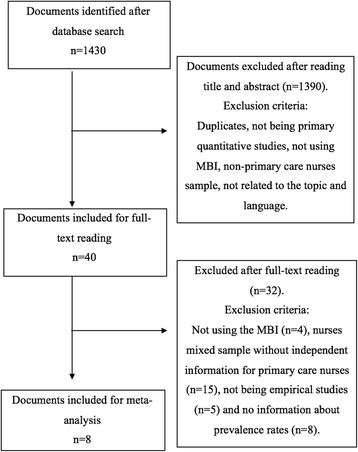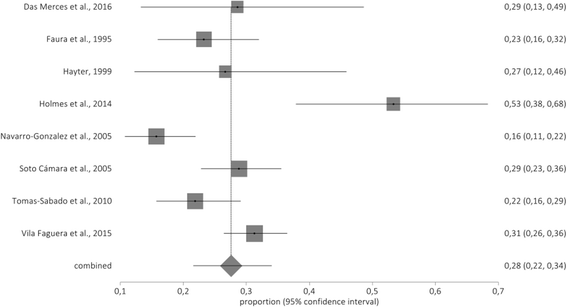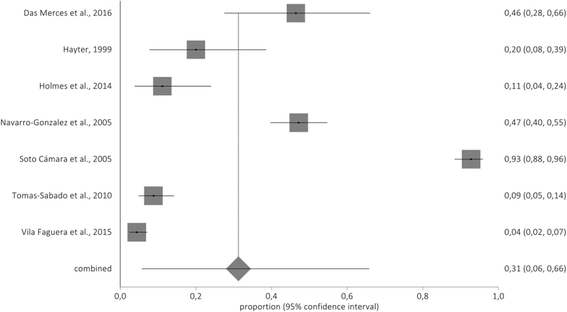Burnout syndrome and its prevalence in primary care nursing: a systematic review and meta-analysis
- PMID: 29747579
- PMCID: PMC5944132
- DOI: 10.1186/s12875-018-0748-z
Burnout syndrome and its prevalence in primary care nursing: a systematic review and meta-analysis
Abstract
Background: burnout syndrome is a significant problem in nursing professionals. Although, the unit where nurses work may influence burnout development. Nurses that work in primary care units may be at higher risk of burnout. The aim of the study was to estimate the prevalence of emotional exhaustion, depersonalization and low personal accomplishment in primary care nurses.
Methods: We performed a meta-analysis. We searched Pubmed, CINAHL, Scopus, Scielo, Proquest, CUIDEN and LILACS databases up to September 2017 to identify cross-sectional studies assessing primary care nurses' burnout with the Maslach Burnout Inventory were included. The search was done in September 2017.
Results: After the search process, n = 8 studies were included in the meta-analysis, representing a total sample of n = 1110 primary care nurses. High emotional exhaustion prevalence was 28% (95% Confidence Interval = 22-34%), high depersonalization was 15% (95% Confidence Interval = 9-23%) and 31% (95% Confidence Interval = 6-66%) for low personal accomplishment.
Conclusions: Problems such as emotional exhaustion and low personal accomplishment are very common among primary care nurses, while depersonalization is less prevalent. Primary care nurses are a burnout risk group.
Keywords: Burnout; Epidemiology; Family nursing; Meta-analysis; Nursing; Prevalence; Primary care nursing.
Conflict of interest statement
Ethics approval and consent to participate
Not applicable.
Competing interests
The authors declare that they have no competing interests.
Publisher’s Note
Springer Nature remains neutral with regard to jurisdictional claims in published maps and institutional affiliations.
Figures
References
Publication types
MeSH terms
LinkOut - more resources
Full Text Sources
Other Literature Sources





